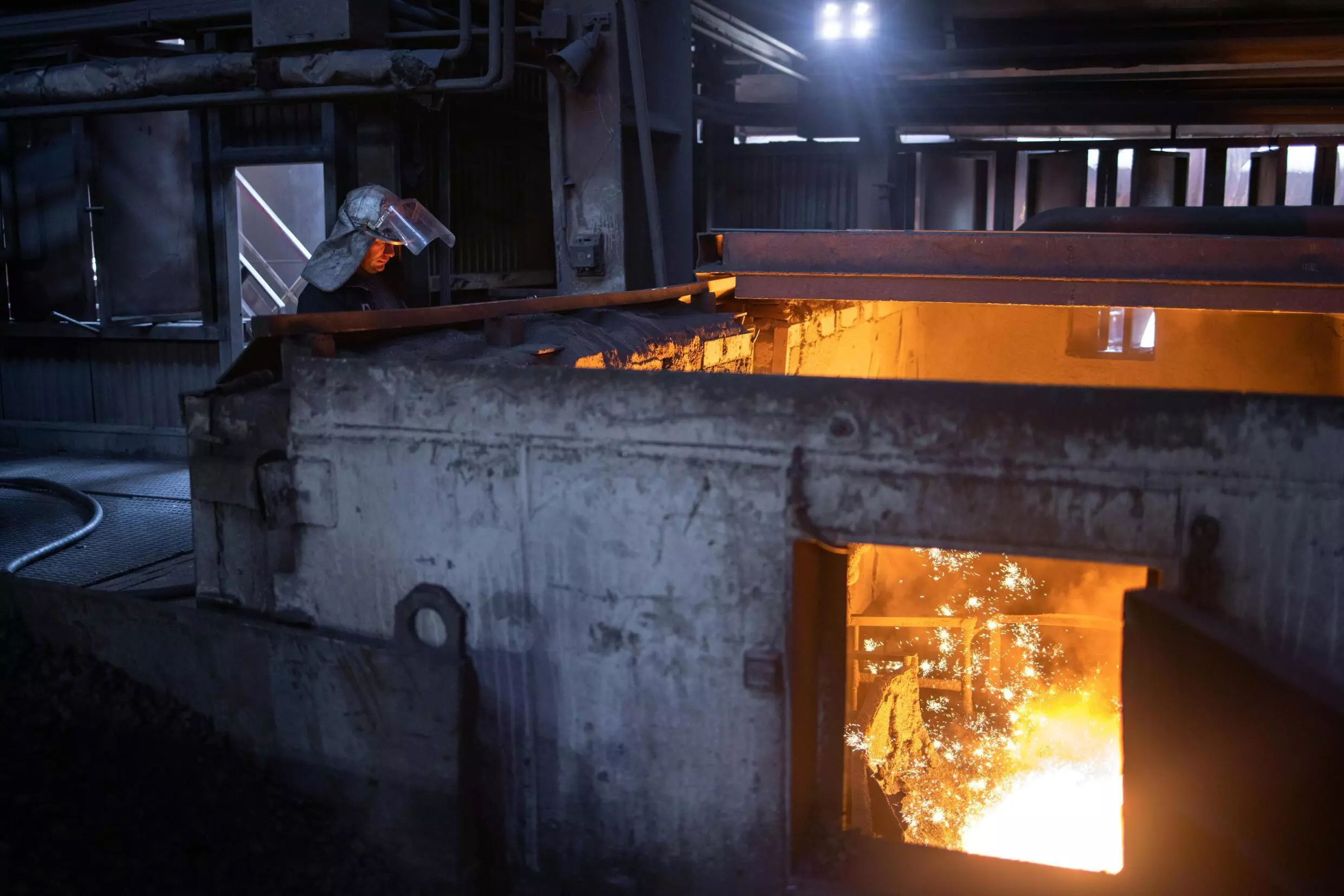
The leading French news agency AFP visited “Zaporizhstal” of the Metinvest Group and “ArcelorMittal” in Kryvyi Rih. In their report, foreign journalists detailed the challenges faced by the steel industry of Ukraine during the war, and how it overcomes them.
In a heat-protective suit with a hood and a visor, Serhiy peers into the brilliant orange flow of hot metal at Zaporizhstal, Ukrainian iron and steel works. A Blast Furnace Shop worker routinely checks iron molten at temperatures of about 1,400 degrees Celsius (2,552 degrees Fahrenheit) for impurities. Meanwhile, only 40 kilometres away, the most intensive battles during the Russian invasion are taking place as part of the counter-attack of Ukraine.
Since the beginning of the war, the steel industry of Ukraine, located mainly in the front-line regions, has lost plants, personnel, suppliers and access to all-important export hubs. The World Bank calculations help to understand such losses, according to which the economy of Ukraine suffered huge losses in the amount of USD 411 billion in the first year of the war.
Zaporizhstal is part of the steel and mining Metinvest Group, controlled by Rinat Akhmetov, the richest man in Ukraine.

“Our main task is to save the company, our assets, and people and survive,” says Oleksandr MYRONENKO, COO of Metinvest, in an interview with AFP.
Such steel plants as Zaporizhstal are key to Ukraine’s economy and maintaining production. Their work, even at lower capacities, shows the sustainability of the industry.
However, these enterprises also became symbols of Ukraine’s military resistance: the Azov battalion resisted the Russian troops, defending Azovstal iron and steel works, owned by Metinvest, during the siege of the port city of Mariupol.
Zaporizhstal is an extensive network of pipes, roads, railways and warehouses. In one of the buildings, an information plate from Soviet times shows production records.
Someone wrote on it: “Putin is a d**khead”
“The only alternative is to fight”
According to the representative of the enterprise, the plant’s furnaces were cooled only twice in its entire history – during the Second World War and the Russian invasion.
Mr Myronenko says that despite the hostilities near the plant, Zaporizhstal is utilized at approximately 70% of pre-war volumes. Most of the products are sent to the USA or Europe.
“I hope we will produce more steel than in 2022. This can be considered a good result,” he said.
However, exports are becoming more difficult, he said, due to russia’s blockade of the Black Sea ports and shelling of the Danube port of Izmail, where workers are afraid to work at moscow’s gunpoint.
Last month, Metinvest managed to ship the goods on three ships that had been stuck in Black Sea ports since the beginning of the war, but according to Mr Mironenko, shipowners are afraid to send more ships. He said that he is hoping for an alternative Black Sea route that Ukraine is testing.
Like the ports, Zaporizhstal is under threat of Russian shelling. There are bomb shelters, but some workers cannot stop work during air alerts.
“It’s not possible to stop the work process. It’s scary, but what to do? We have to feed the family,” says 30-year-old Serhiy, a Shop worker, and raising cascades of sparks while inspecting metal.
“The only alternative is to fight,” Serhiy adds.
About 8,000 employees of Metinvest were mobilized or they went to fight voluntarily.

“Together fight for victory”
At the largest iron and steel works in Ukraine, ArcelorMittal Kryvyi Rih, owned by the Luxembourg holding company, 2,600 workers went to the front, and more than a hundred of them were killed. Before the war, the company employed 26,000 people, but now there are about 12,000 full-time employees.
At the same time, Zaporizhstal lost about a third of its 10,500 workers after the invasion. Due to the lower production, some employees went on forced downtime for 2/3 of their wages, joined the ranks of the Armed Forces, or left Zaporizhzhia.
At the entrance to Zaporizhstal territory, there is a billboard: “Together fight for victory”
After the russian invasion, the plant suspended the operation of its furnaces, and this summer, the operation of water-cooled equipment. This happened after the large explosion of the Kakhovka Hydroelectric Power Plant, which Russian troops are accused of.
Let’s return to Kryvyi Rih. The Dnipro River is located approximately 55 kilometers away, and Russian troops are consolidated on the opposite bank.
“War dictates its terms,” says Vladyslav TYURIN, a 39-year-old senior foreman at ArcelorMittal Kryvyi Rih.
According to him, out of about 350 people from his unit, 65 went to fight and four were killed.
When asked what happens when the sounds of air alerts mix with the rumble of equipment and the rattle of metal on a continuous casting line, he answered simply: “We are afraid”
Vitaly, a 33-year-old foreman at ArcelorMittal Kryvyi Rih, said that only a week ago, Russian troops shelled the region with missiles and Iranian drones for four hours: “We were in the bomb shelter until 9 am. Shaheds and rockets were flying.”

In a statement, ArcelorMittal said that in “extremely difficult conditions” “alternative logistics schemes” were created for the plant.
Before, the plant exported 85% of finished products mainly to the Middle East and Africa, but now most of the goods go to Europe.
Mr Tyurin admitted that production volumes at ArcelorMittal Kryvyi Rih are “minor” compared to pre-war times. However, he is sure that their steel will be needed for the post-war reconstruction of Ukraine.
“The Russians destroyed part of the country. We will need steel products for construction,” he said.
